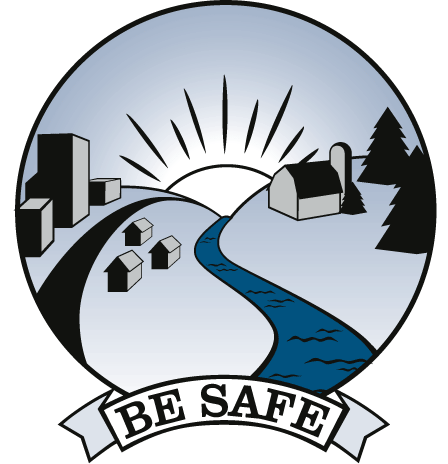![]()
![]()
![]()
High-Level
Radioactive
Waste
Disposal
& Transport Plans Threaten Communities

How
Dangerous is High-Level Waste?
Although
stockpiles of high-level radioactive waste (HLRW) make up only 1%
of the total volume of all radioactive wastes in America, they contain
about 95% of the radioactivity [IDBR]. HLRW is so deadly,
human contact can deliver a fatal dose of radiation within seconds
or minutes, depending on how long it has been removed from the reactor,
and it must be handled by remote control behind heavy shielding.
Radiation given off by HLRW is invisible, odorless, and tears
at the very fabric of what makes us human—our cells and genetic
material. In addition to cancer and birth defects, evidence
exists that radiation is permanently mutating the gene pool and
contributing to its gradual weakening, resulting in “developmental
deficiencies in the fetus, hereditary disease, accelerated aging,
and such non-specific effects as loss of immune competence.” [NS].
High-Level
Problems at Proposed Nevada Waste Dump.
The
federal government is planning to move over 70,000 tons of HLRW
across our nation’s highways, railways, and waterways to a massive
permanent burial site at Yucca Mountain, 90 miles northwest of Las
Vegas, Nevada. The area is riddled with earthquake fault lines
and underground hot water, with a history of volcanic activity.
Over 600 earthquakes have occurred within a 50-mile radius
of the site between 1976 and 1996 alone. [CNSSCC]. A 5.6 quake in
1992 did extensive damage to a Department of Energy (DOE) facility
at the site. The fractures in the underground rock formation at
Yucca Mountain provide fast flowing pathways for radioactive gases
and contaminated water that would leak out of the storage facility
and threaten people living downwind and downstream.
The U.S. Nuclear Waste Technical Review Board has warned that DOE’s Yucca Mt. repository design will lead to corrosion of the waste burial containers and relatively rapid radioactive releases. [NWTRB] Siting guidelines and environmental protection standards have been repeatedly weakened and even abandoned. Yet the U.S. Congress and George W. Bush have allowed DOE to move ahead with the proposed dump. Bush’s proposed Yucca Mt. Project budget for Fiscal Year 2005 is $880 million—nearly $2.5 million per day! [OCRWM] But the site has not yet been approved by the Nuclear Regulatory Commission, and faces fierce opposition (including in the courts) from the state of Nevada, the vast majority of its citizens, as well as environmental groups and concerned citizens across the country.
No
Safe Disposal for High-Level Radioactive Waste.
HLRW
is dangerously radioactive for hundreds of thousands to millions
of years. [RW] For the last 60 years, experts around the world have
been unable to design a safe, permanent disposal method for HLRW.
Despite knowing this, the U.S. government continues to allow
the nuclear industry to produce HLRW at 103 commercial U.S. nuclear
power reactors—where there are now over 45,000 tons of HLRW in “interim”
storage. If nuclear reactors continue to operate, 63,000 tons of
HLRW will exist in the U.S. by 2011, enough to fill Yucca Mt. to
its legal limit. Waste generated after that would be exceed Yucca
Mt.’s capacity. By 2040, almost as much waste would have been generated
at reactor sites across the U.S. as there is today. [DOE EIS] The
nuclear power industry also proposes to build a “Private Fuel Storage”
facility – similar to an open air parking lot – for 40,000 tons
of HLRW on the Skull Valley Goshutes Indian Reservation in Utah.
BE SAFE: Prevent High-Level Radioactive Waste From Threatening Millions of People Across America